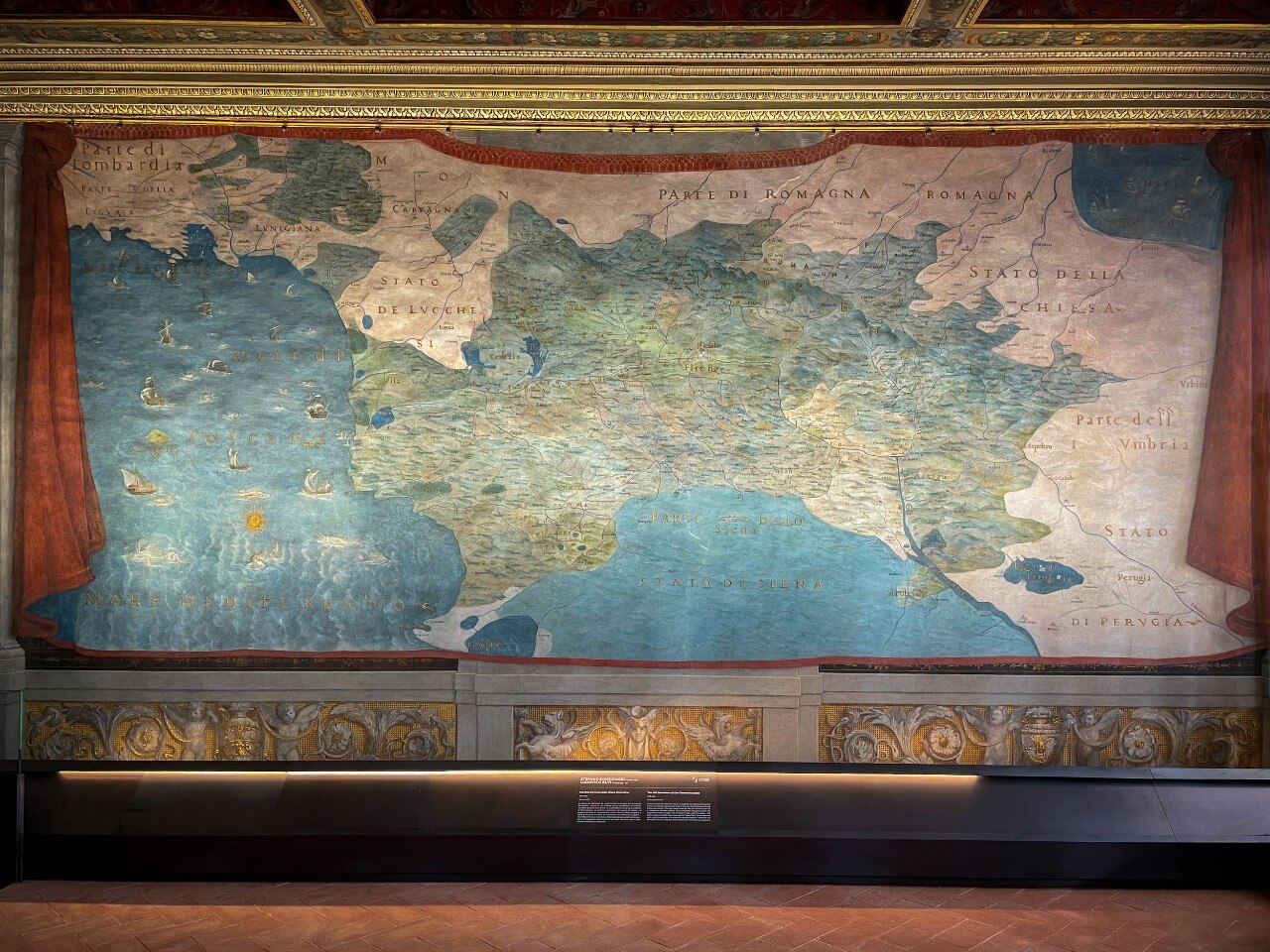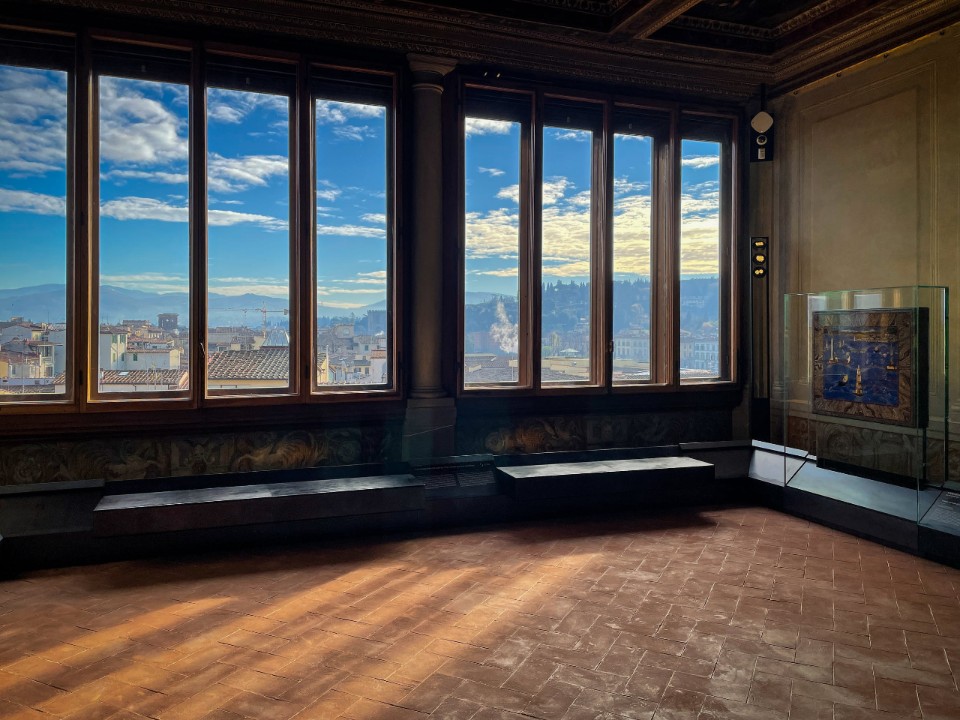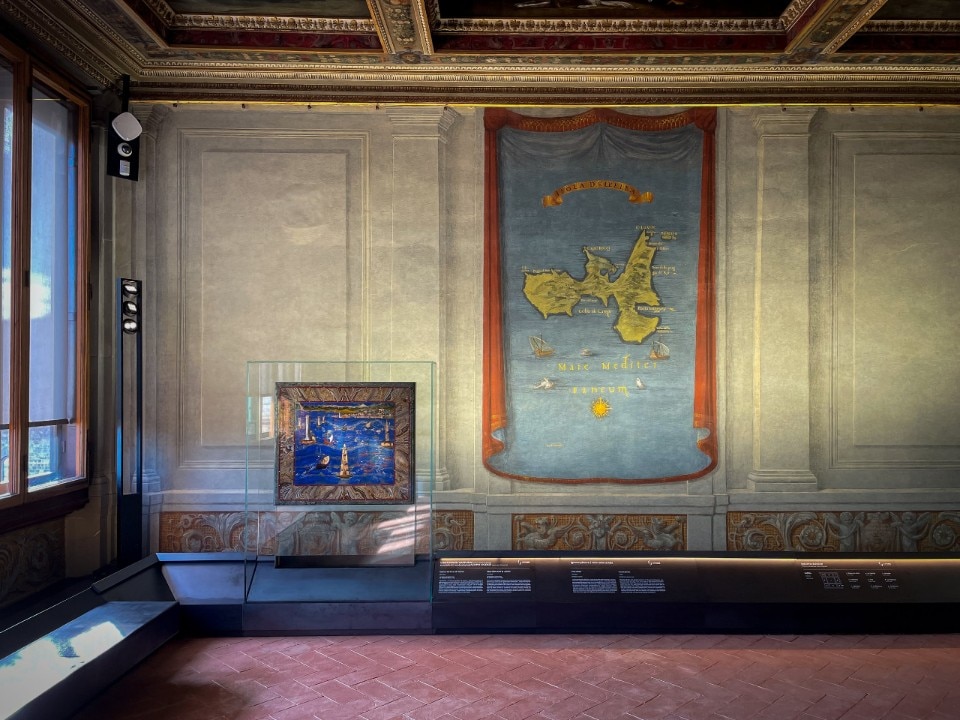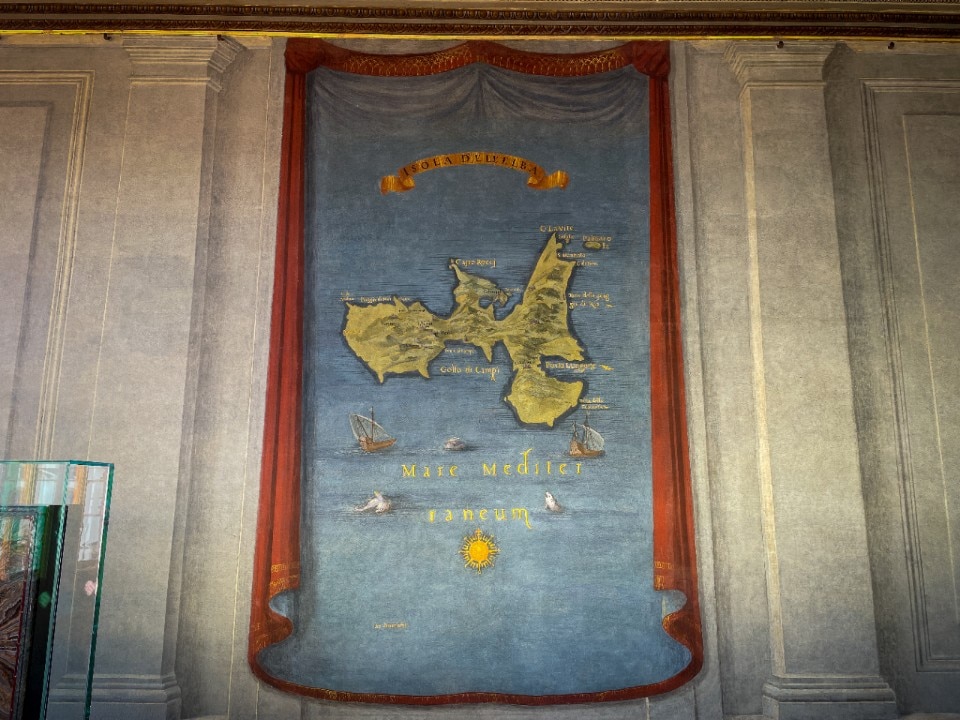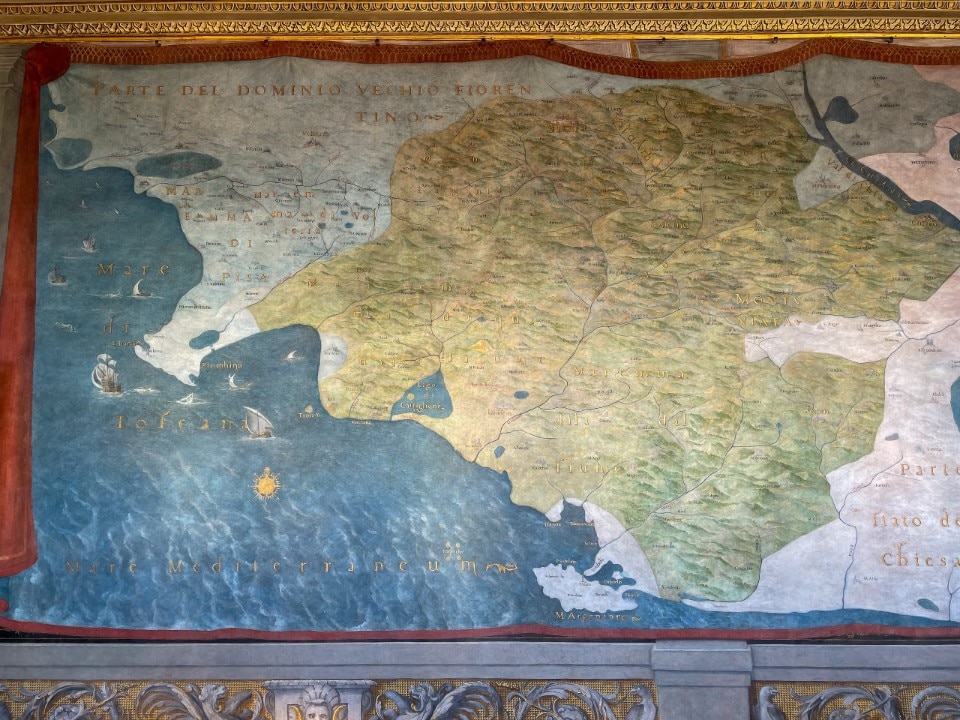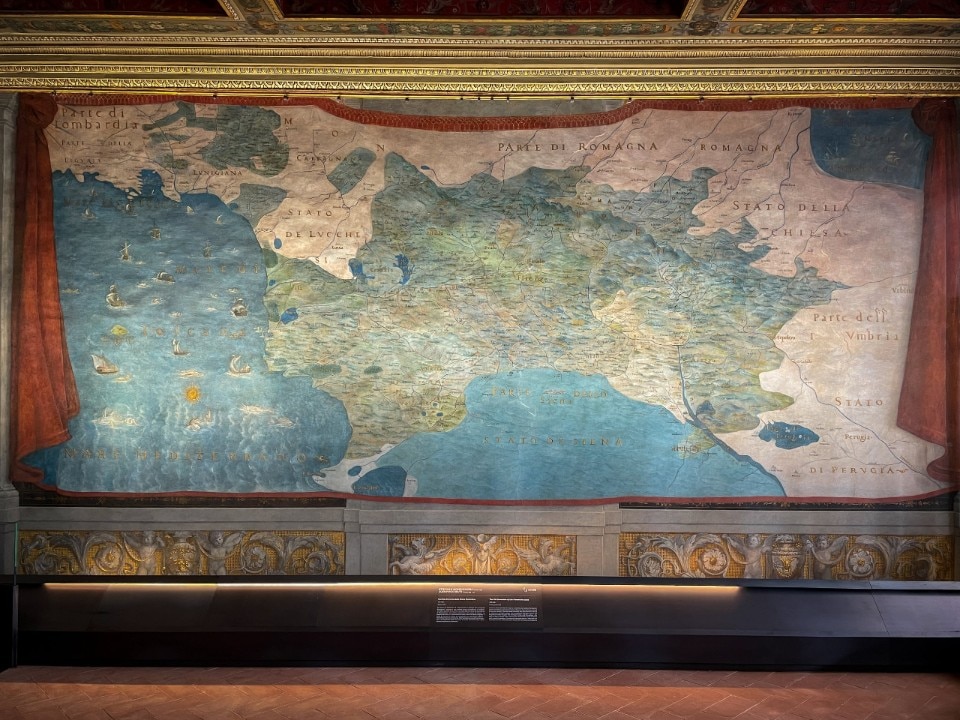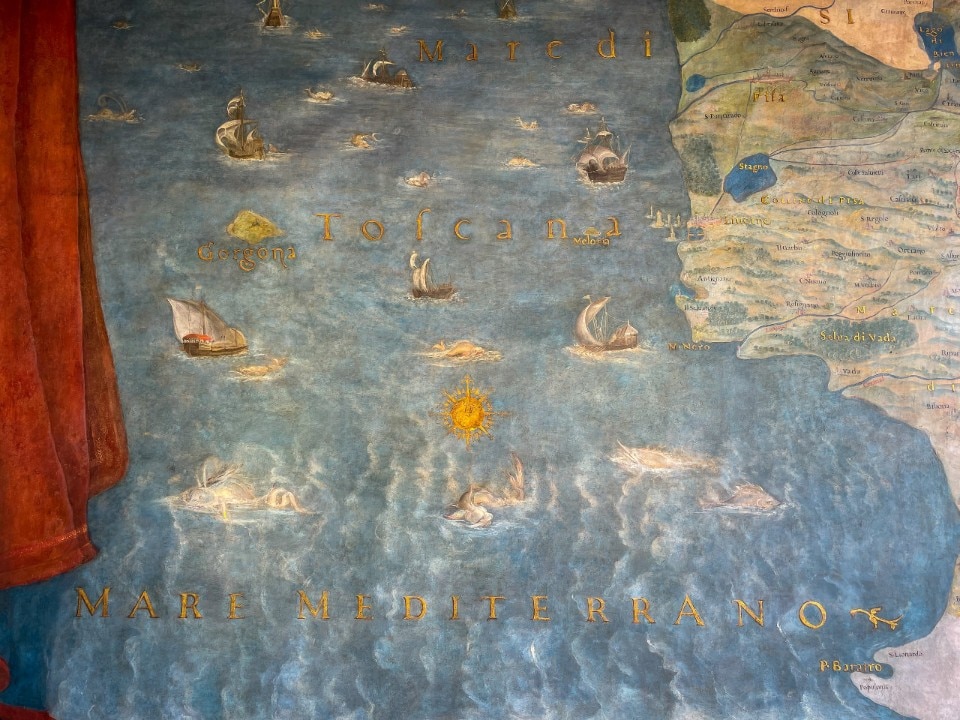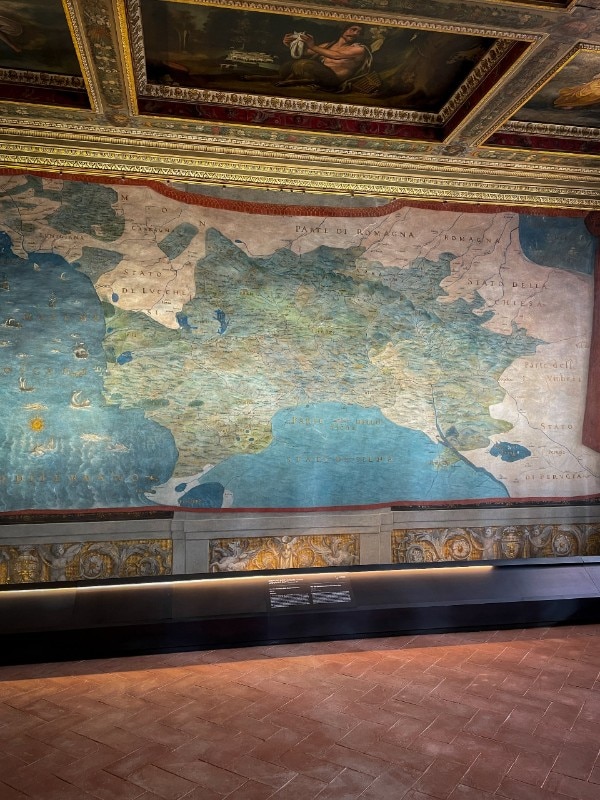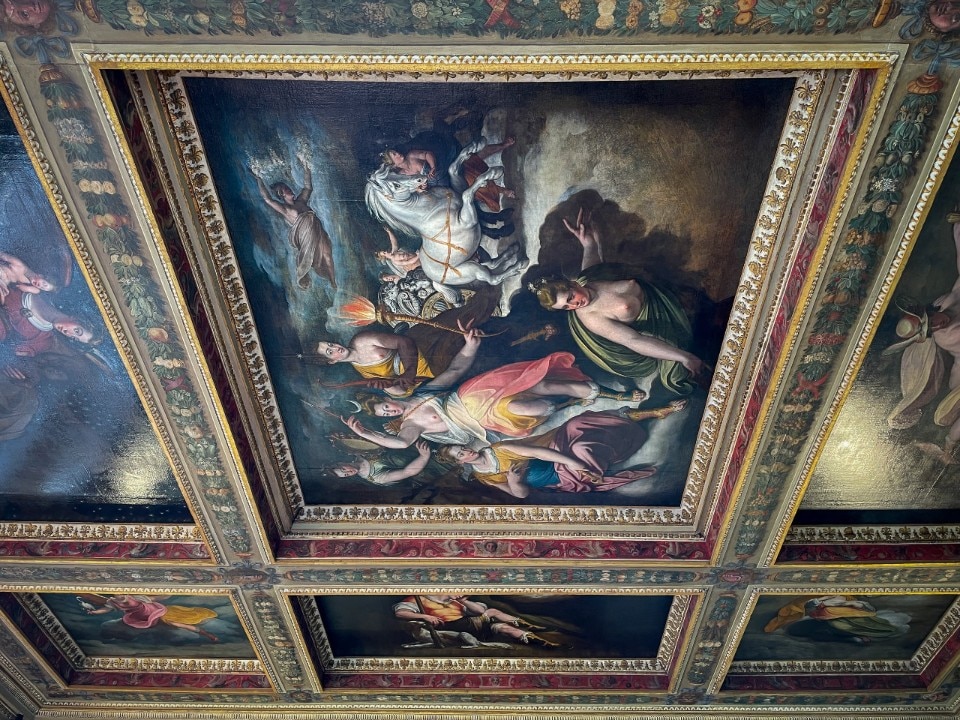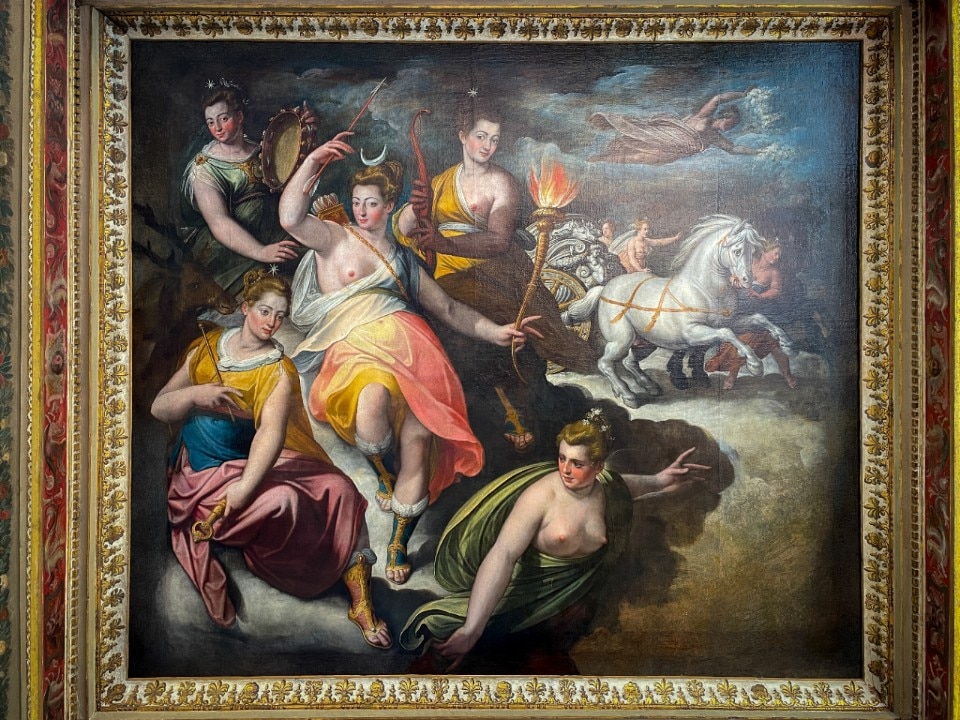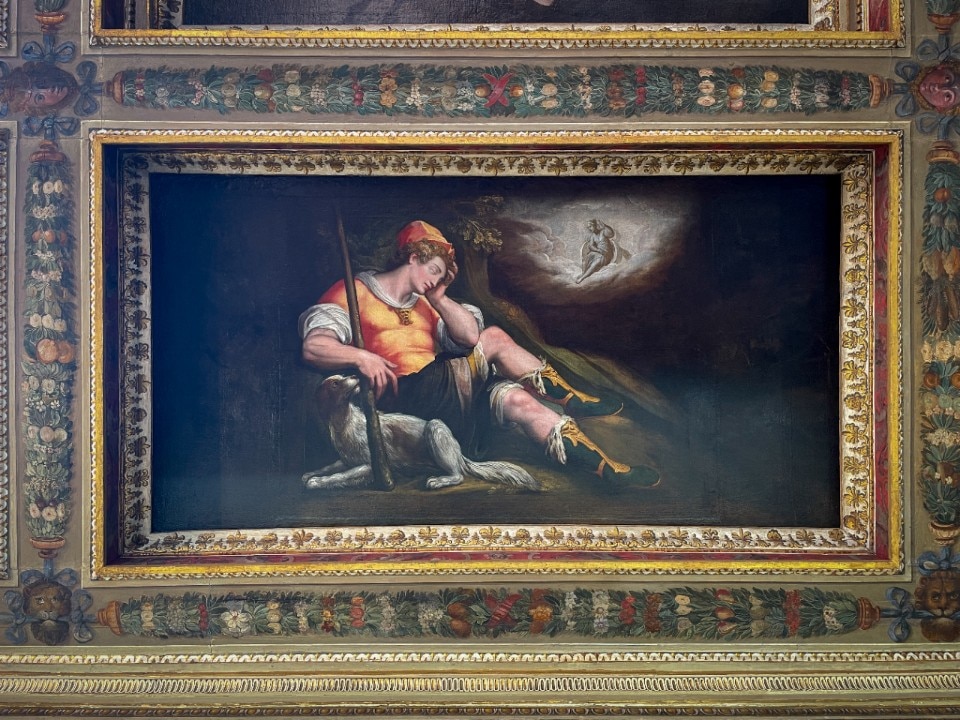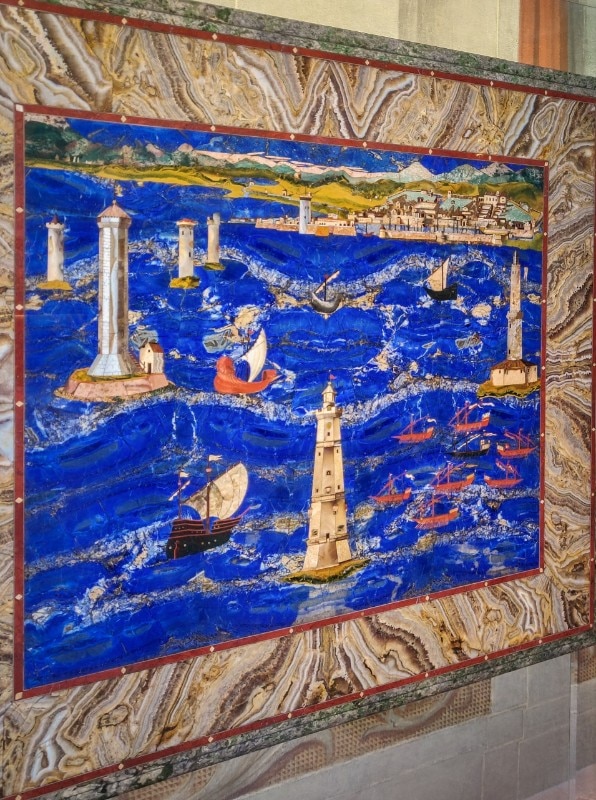“In Florence, the monuments are so dense that they seem to be stacked”, wrote Anselmo Bucci in Il pittore volante (1930). Florence is a proud city, rich in beauty and history, and today, in its most famous palace, it has brought back to full splendour a room that is unique both in its kind and in the wonders that it has hidden from the general public for more than twenty years: the Hall of Maps in the Uffizi.
The hall, designed by Vasari, was originally a loggia that was later closed and restored by order of Cardinal and Grand Duke Ferdinando I de’ Medici (1549 – 1609), who wanted to create an exhibition space entirely dedicated to his collection of scientific instruments. Ferdinando paid attention to every little detail of the room. He also commissioned the fitting of several canvases by Jacopo Zucchi on various mythological subjects, allegories of time and virtues that he had already in Rome in his residence in Villa Medici before becoming Grand Duke and that he wanted to bring with him to Florence and display in this very room. The walls of the room frescoed by Ludovico Buti feature several maps representing the Florentine Heritage Dominion, the Island of Elba and the State of Siena.
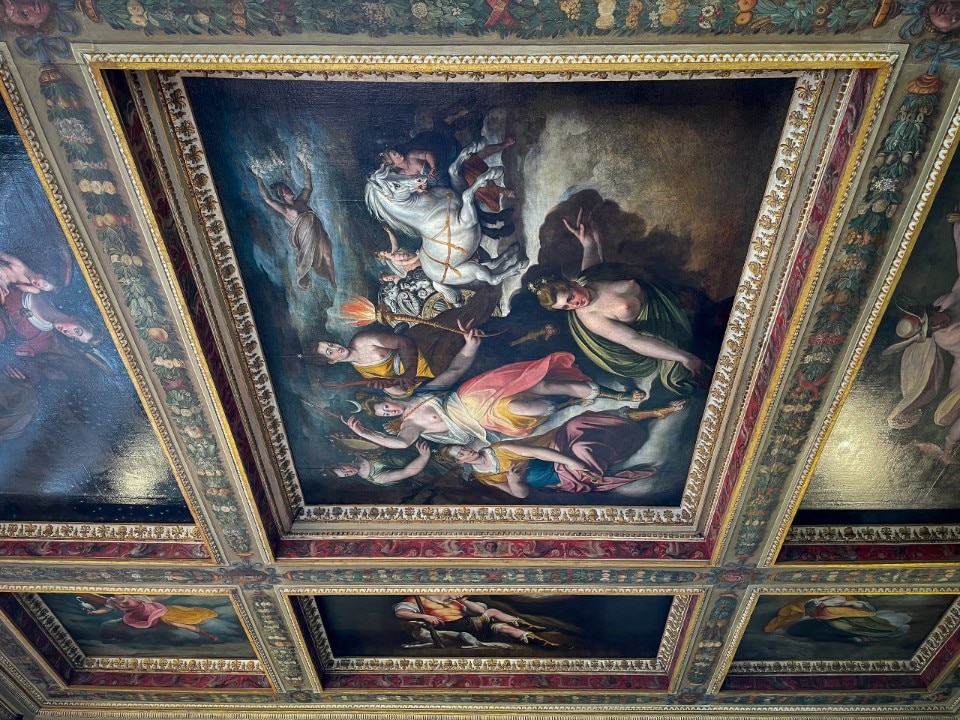
Buti relied essentially on the drawings made by the cartographer Stefano Bonsignori for Grand Duke Ferdinando I de’ Medici. Accurate, precise, careful, even at the time of their realisation, they symbolised the pinnacle of Florentine mastery in drawing. A priceless artistic heritage for its history, its paintings and the panorama that can be admired and which is part of the idea of spectacularising the Florentine magnificence of the time.
Eike Schmidt, director of the Uffizi, said: “The room features the paintings of more than 1,200 places in Tuscany, both from the old Florentine Heritage Dominion and the new State of Siena. There is a fresco of the island of Elba and, for the first time, a large semi-precious stone Florentine mosaic depicting Livorno as a strategically important port for the Medici family. From the panoramic window, which was previously made of stained glass, you can now finally see Florence. A spectacular view of Santa Croce and San Miniato al Monte. The Uffizi was built under Cosimo I when Florence went from being a city-state to a territorial state”.
Eike Schmidt, director of the Uffizi, said: “The room features the paintings of more than 1,200 places in Tuscany, both from the old Florentine Heritage Dominion and the new State of Siena. There is a fresco of the island of Elba and, for the first time, a large semi-precious stone Florentine mosaic depicting Livorno as a strategically important port for the Medici family. From the panoramic window, which was previously made of stained glass, you can now finally see Florence. A spectacular view of Santa Croce and San Miniato al Monte. The Uffizi was built under Cosimo I when Florence went from being a city-state to a territorial state”.


